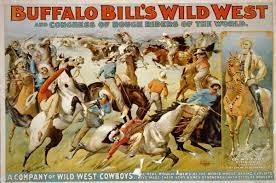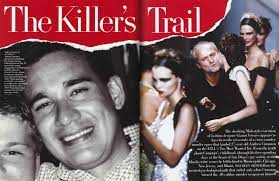FDA approves "the pill"
On May 9, 1960, the Food and Drug Administration (FDA) approves the world’s first commercially produced birth-control pill—Enovid-10, made by the G.D. Searle Company of Chicago, Illinois.
Development of “the pill,” as it became popularly known, was initially commissioned by birth-control pioneer Margaret Sanger and funded by heiress Katherine McCormick. Sanger, who opened the first birth-control clinic in the United States in 1916, hoped to encourage the development of a more practical and effective alternative to contraceptives that were in use at the time.
In the early 1950s, Gregory Pincus, a biochemist at the Worcester Foundation for Experimental Biology, and John Rock, a gynecologist at Harvard Medical School, began work on a birth-control pill. Clinical tests of the pill, which used synthetic progesterone and estrogen to repress ovulation in women, were initiated in 1954. On May 9, 1960, the FDA approved the pill, granting greater reproductive freedom to American women.
VIETNAM WAR
1970
President Nixon meets with anti-war protesters at the Lincoln Memorial
In the early hours of May 9, 1970, a frazzled President Richard Nixon embarks upon what his Chief of Staff will describe as "the weirdest day so far" of his presidency. Preoccupied with the recent Kent State shootings and the unrest that has spread to college campuses across the the country, Nixon makes an impromptu and bizarre visit to a group of anti-war protesters at the Lincoln Memorial. On the Friday after the Kent State massacre, in which Ohio National Guard killed four students and wounded nine during an anti-war protest, Nixon was unable to sleep. Around 4 in the morning, after spending several hours making phone calls, he roused his personal valet, Manolo Sanchez, and asked him if he had ever seen the Lincoln Memorial at night. Knowing he would encounter a crowd of student protesters that had camped out on the National Mall, Nixon set off with Sanchez, his physician and a Secret Service team.
CRIME
1671
Irish adventurer “Captain Blood” steals crown jewels
In London, Thomas Blood, an Irish adventurer better known as “Captain Blood,” is captured attempting to steal the Crown Jewels from the Tower of London. Blood, a Parliamentarian during the English Civil War, was deprived of his estate in Ireland with the restoration of the English monarchy in 1660. In 1663, he put himself at the head of a plot to seize Dublin Castle from supporters of King Charles II, but the plot was discovered and his accomplices executed. He escaped capture. In 1671, he hatched a bizarre plan to steal the new Crown Jewels, which had been refashioned by Charles II because most of the original jewels were melted down after Charles I’s execution in 1649.
EXPLORATION
1926
Explorer Richard Byrd claims to have flown over the North Pole
According to their claims, polar explorer Richard E. Byrd and co-pilot Floyd Bennett fly over the North Pole on this day in the Josephine Ford, a triple-engine Fokker monoplane. It would have been the first time an aircraft flew over the top of the world.
CRIME
1978
Former Italian Prime Minister Aldo Moro is found dead
On May 9, 1978, the body of former Italian prime minister Aldo Moro is found, riddled by bullets, in the back of a car in the center of historic Rome. He was kidnapped by Red Brigade terrorists on March 16 after a bloody shoot-out near his suburban home.
ART, LITERATURE, AND FILM HISTORY
1950
L. Ron Hubbard publishes "Dianetics"
On May 9, 1950, Lafayette Ronald Hubbard (1911-1986) publishes Dianetics: The Modern Science of Mental Health. With this book, Hubbard introduced a branch of self-help psychology called Dianetics, which quickly caught fire and, over time, morphed into a belief system called Scientology. Hubbard was already a prolific and frequently published writer by the time he penned the book that would change his life. Under several pseudonyms in the 1930s, he published a great amount of pulp fiction, particularly in the science fiction and fantasy genres. In late 1949, having returned from serving in the Navy in World War II, Hubbard began publishing articles in the pages of Astounding Science Fiction, a magazine that published works by the likes of Isaac Asimov and Jack Williamson. Out of these grew the elephantine text known as Dianetics: The Modern Science of Mental Health.
WORLD WAR II
1945
High-ranking Nazi Hermann Göring is captured by the U.S. Seventh Army
On May 9, 1945, Herman Goering, commander in chief of the Luftwaffe, president of the Reichstag, head of the Gestapo, prime minister of Prussia and Hitler’s designated successor is taken prisoner by the U.S. Seventh Army in Bavaria.
VIETNAM WAR
1969
Reporter breaks the news of secret bombing in Cambodia
William Beecher, military correspondent for the New York Times, publishes a front page dispatch from Washington, “Raids in Cambodia by U.S. Unprotested,” which accurately described the first of the secret B-52 bombing raids in Cambodia.
U.S. PRESIDENTS
1974
House votes to initiate impeachment proceedings against President Nixon
The House of Representatives Judiciary Committee opens impeachment hearings against President Richard Nixon, voting to impeach him on three counts on July 30. The impeachment was the result of the scandal involving the bungled burglary of the offices of the Democratic National Committee in the Watergate apartment complex in Washington, D.C., on June 23, 1972. Eventually, it was learned that there was a criminal cover-up that went all the way to the White House. Nixon, facing the impeachment proceedings, resigned the presidency on August 8, 1974. His resignation had a major impact on the situation in Vietnam. Nixon had convinced South Vietnamese President Nguyen Van Thieu to consent to the provisions of the Paris Peace Accords by personally promising (on more than 30 occasions) that the United States would re-enter the conflict if the North Vietnamese violated the peace agreement.
U.S. PRESIDENTS
1914
Woodrow Wilson proclaims the first Mother’s Day holiday
On May 9, 1914, President Woodrow Wilson issues a presidential proclamation that officially establishes the first national Mother’s Day holiday to celebrate America’s mothers. The idea for a “Mother’s Day” is credited by some to Julia Ward Howe (1872) and by others to Anna Jarvis (1907), who both suggested a holiday dedicated to a day of peace. Many individual states celebrated Mother’s Day by 1911, but it was not until Wilson lobbied Congress in 1914 that Mother’s Day was officially set on the second Sunday of every May. In his first Mother’s Day proclamation, Wilson stated that the holiday offered a chance to “[publicly express] our love and reverence for the mothers of our country.”
WESTWARD EXPANSION
1887
“Buffalo Bill’s Wild West” show opens
Buffalo Bill’s Wild West show opens in London, giving Queen Victoria and her subjects their first look at a romanticized version of the American West. A well-known scout for the army and a buffalo hunter for the railroads (which earned him his nickname), Cody had gained national prominence 15 years earlier thanks to a fanciful novel written by Edward Zane Carroll Judson. Writing under the pen name Ned Buntline, Judson made Cody the hero of his highly sensationalized dime novel The Scouts of the Plains; or, Red Deviltry As It Is. In 1872, Judson also convinced Cody to travel to Chicago to star in a stage version of the book. Cody broke with Judson after a year, but he enjoyed the life of a performer and stayed on the stage for 11 seasons.
ART, LITERATURE, AND FILM HISTORY
1964
An unlikely challenger ends the Beatles’ reign atop the U.S. pop charts
Following the ascension of “I Wanna Hold Your Hand” to #1 in early February, the Beatles held the top spot on the Billboard Hot 100 for three and a half solid months—longer than any popular artist before or since. Over the course of those months, the Fab Four earned three consecutive #1 singles (a record); held all five spots in the top five in early April (a record); and had a total of 14 songs in the Billboard Hot 100 in mid-April (yet another record). But just when it seemed that no homegrown act would ever stand up to the British invaders, one of the least likely American stars imaginable proved himself equal to the task. On May 9, 1964, the great Louis Armstrong, age 63, broke the Beatles’ stranglehold on the U.S. pop charts with the #1 hit “Hello Dolly.”
ART, LITERATURE, AND FILM HISTORY
1971
Last episode of “The Honeymooners” airs
On May 9, 1971, the last original episode of the sitcom The Honeymooners, starring Jackie Gleason as Brooklyn bus driver Ralph Kramden, airs. Although a perennial rerun favorite in syndication, The Honeymooners actually aired only 39 episodes in its familiar sitcom format, running for just one season in 1955-56. The show debuted on October 5, 1951, as a six-minute sketch on the variety show Cavalcade of Stars, hosted by Jackie Gleason. Cavalcade of Stars evolved into The Jackie Gleason Show in 1952, and Gleason continued the sketches, playing the blustery Ralph Kramden. Regular cast member Audrey Meadows soon replaced the original casting choice, Pert Kelton, as Ralph’s long-suffering wife, Alice, who deflated his get-rich-quick schemes but often saved the day. Art Carney played Gleason’s friend and sidekick, Ed Norton, from the beginning, and Joyce Randolph was the most memorable incarnation of Ed’s wife, Trixie.
CRIME
1997
Andrew Cunanan continues murder spree
The body of William Reese, 45, a cemetery caretaker, is found in rural Pennsville, New Jersey, on May 9, 1997. He had been shot in the head with a Golden Saber .38-caliber bullet. Police soon determined that the killer was Andrew Cunanan, a 27-year-old man already wanted for three murders. It appeared that Cunanan had killed Reese in the process of stealing his Chevrolet pick-up.
COLD WAR
1955
West Germany joins NATO
Ten years after the Nazis were defeated in World War II, West Germany formally joins the North Atlantic Treaty Organization (NATO), a mutual defense group aimed at containing Soviet expansion in Europe. This action marked the final step of West Germany’s integration into the Western European defense system.
WORLD WAR I
1915
Allies launch dual offensive on Western Front
On May 9, 1915, Anglo-French forces fighting in World War I launch their first combined attempt to break through the heavily fortified German trench lines on the Western Front in France. At Vimy Ridge, a strategically important crest of land on the Aisne River, in northwestern France, French troops launched an attack on German positions after firing shrapnel shells for five hours on the morning of May 9, 1915. On the heels of the artillery barrage, the French soldiers left their trenches to advance across No Man’s Land, only to find that the bombardment had failed to break the first German wire. As they struggled to cut the wire themselves, German machine gunners opened fire. Eventually, the French were able to reach their objective, as the Germans withdrew to better lines, but they suffered heavy casualties: one regiment of the French Foreign Legion lost nearly 2,000 of its 3,000 soldiers, including its commanding officer, who was shot in the chest by a sniper, and all three battalion commanders.
















Comments
Post a Comment